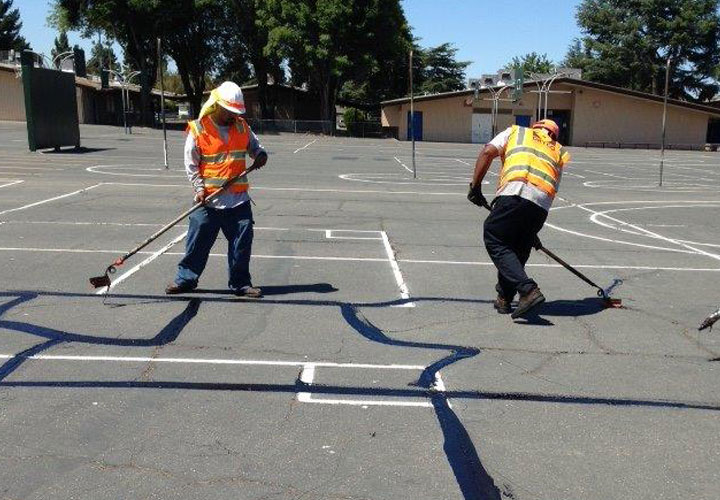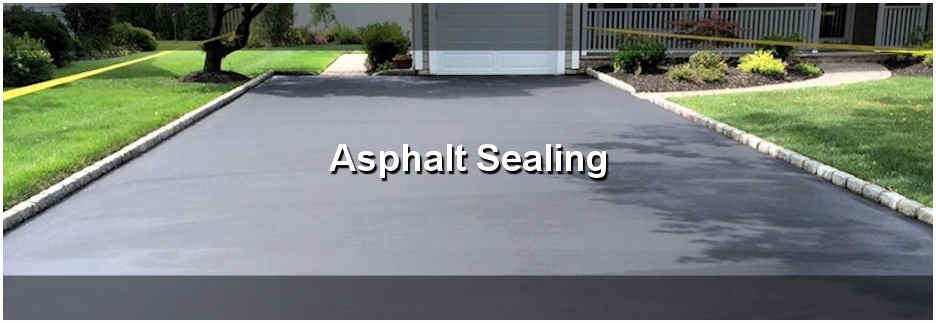Lasting Outcomes: Asphalt Patch Repair With Accuracy Sealing
Cold Mix Asphalt Vs. Hot Mix Asphalt: Which Is Right for You?

Structure Distinctions
Cold mix and hot mix asphalts differ considerably in their structure, with unique characteristics that influence their efficiency and applications. Cold mix asphalt is created by emulsifying the asphalt binder with water and an emulsifying representative prior to mixing it with accumulation. This approach permits the asphalt to be practical at lower temperature levels, making it ideal for temporary repairs and for use in chillier climate condition. Warm mix asphalt, on the various other hand, is made at high temperatures, usually between 300-350 ° F, which aids to accomplish better compaction and an extra resilient final product. The warm mix asphalt production process involves warming the accumulation and asphalt binder independently before integrating them at the asphalt plant.
Furthermore, cool mix asphalt has a tendency to be less dense and more adaptable than hot mix asphalt. This versatility makes it much better matched for areas with greater degrees of movement, such as driveways or roadways with rush hour. On the other hand, hot mix asphalt is understood for its high longevity and resistance to rutting and cracking, making it a recommended selection for highways and high-traffic roads where longevity is important.
Setup Refine Differences
The procedure of setting up cool mix and warm mix asphalt shows notable variances in their procedures and requirements. Cold mix asphalt, being an extra adaptable product, can be used directly from the bag or container onto the pit or harmed area. It needs marginal preparation job, such as cleaning up the area and condensing the chilly mix with hand devices. This makes it a hassle-free option for short-lived and fast solutions. In comparison, hot mix asphalt demands an extra elaborate setup process. It entails heating up the mix to heats prior to laying it down on an effectively prepared base. The preparation includes condensing the base, using a tack layer, and using hefty machinery like pavers and compactors for a sturdy and smooth finish. Due to the home heating needs, warm mix asphalt installations are usually accomplished by experts with specialized tools, guaranteeing a more structurally audio and irreversible outcome.
Resilience and Longevity Variables
When thinking about asphalt choices, resilience and long life are critical factors to evaluate for lasting pavement efficiency. Hot mix asphalt (HMA) is known for its phenomenal resilience and durability.
In terms of long life, HMA typically exceeds CMA because of its premium toughness and resistance properties. HMA pavements have a longer solution life, browse around these guys requiring much less constant repair services and maintenance, which can convert to cost financial savings in the future. Furthermore, HMA pavements are more conveniently customizable to fulfill particular job demands, additionally enhancing their durability.
Price Factors To Consider
Considering the monetary effects is an important facet when evaluating the selection in between warm mix asphalt (HMA) and cold mix asphalt (CMA) for sidewalk jobs. While the preliminary expense of hot mix asphalt is commonly greater than that of chilly mix asphalt, HMA often provides an extra affordable solution over time because of its premium resilience and durability. HMA is recognized for its ability to stand up to heavy website traffic loads and extreme climate condition, minimizing the need for frequent fixings and upkeep. On the other hand, cool mix asphalt is extra affordable ahead of time however might call for even more constant patching and resurfacing, bring about higher maintenance expenses gradually.
In addition to product costs, it's crucial to take into consideration the expenses connected with installment and upkeep when contrasting HMA and CMA. Inevitably, the decision between HMA and CMA ought to take into account not simply the initial expense yet additionally the long-lasting financial effects to figure out the most economical option for the particular pavement job.
Environmental Impact Comparison
Comparison of the ecological effects in between hot mix asphalt (HMA) and cold mix asphalt (CMA) discloses distinctive differences in sustainability techniques. HMA manufacturing needs high temperature levels, leading to raised power intake and greenhouse gas discharges.
Additionally, the usage of CMA typically includes reusing existing asphalt pavement, advertising source conservation link and lowering over at this website the quantity of waste sent out to land fills. By deciding for CMA over HMA, road building projects can add favorably to ecological preservation efforts.
Verdict
To conclude, the option in between cool mix asphalt (CMA) and hot mix asphalt (HMA) depends upon different elements such as composition, setup process, sturdiness, durability, price, and environmental influence. asphalt patch repair. While CMA provides a economical and quick option for small fixings, HMA makes certain exceptional durability and long life for hefty website traffic areas. Consider these elements carefully to determine which kind of asphalt is the appropriate selection for your paving requires

Considering the financial implications is a crucial element when examining the option between hot mix asphalt (HMA) and cold mix asphalt (CMA) for pavement projects. While the initial price of hot mix asphalt is typically greater than that of chilly mix asphalt, HMA commonly provides an extra economical remedy in the lengthy run due to its premium toughness and long life. angle parking.Contrast of the environmental impacts between hot mix asphalt (HMA) and cool mix asphalt (CMA) exposes distinct distinctions in sustainability techniques.In conclusion, the choice between chilly mix asphalt (CMA) and warm mix asphalt (HMA) depends on numerous factors such as make-up, setup process, durability, durability, expense, and environmental impact